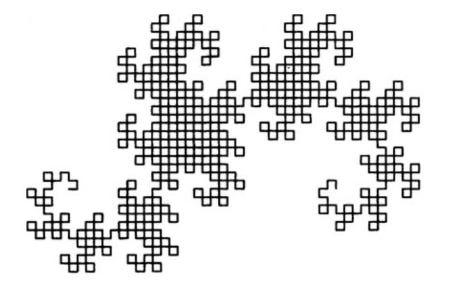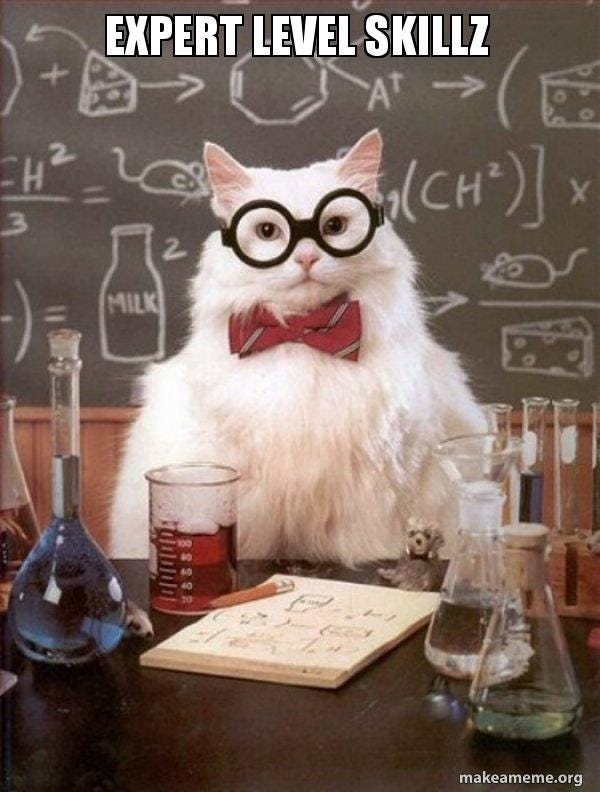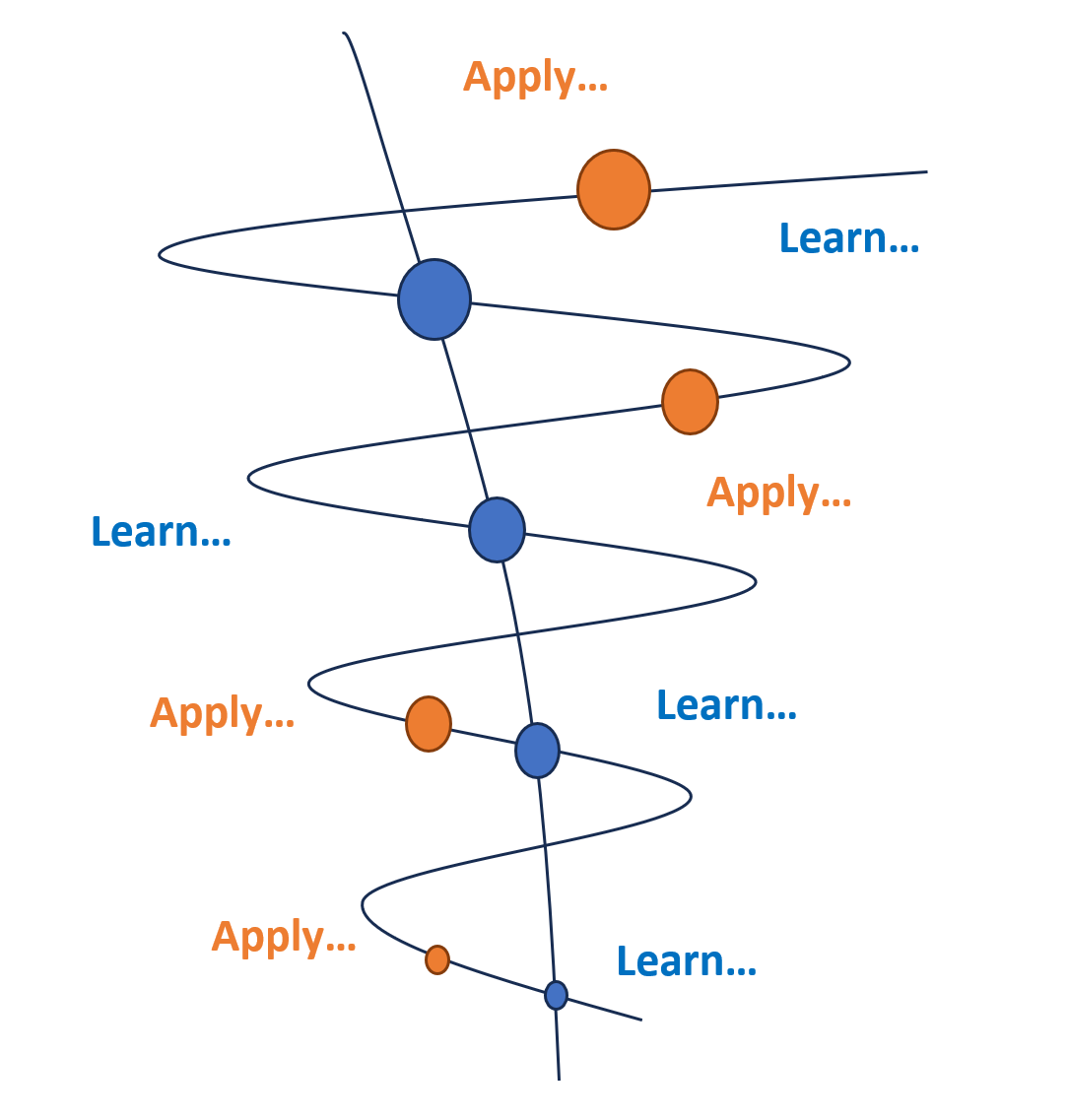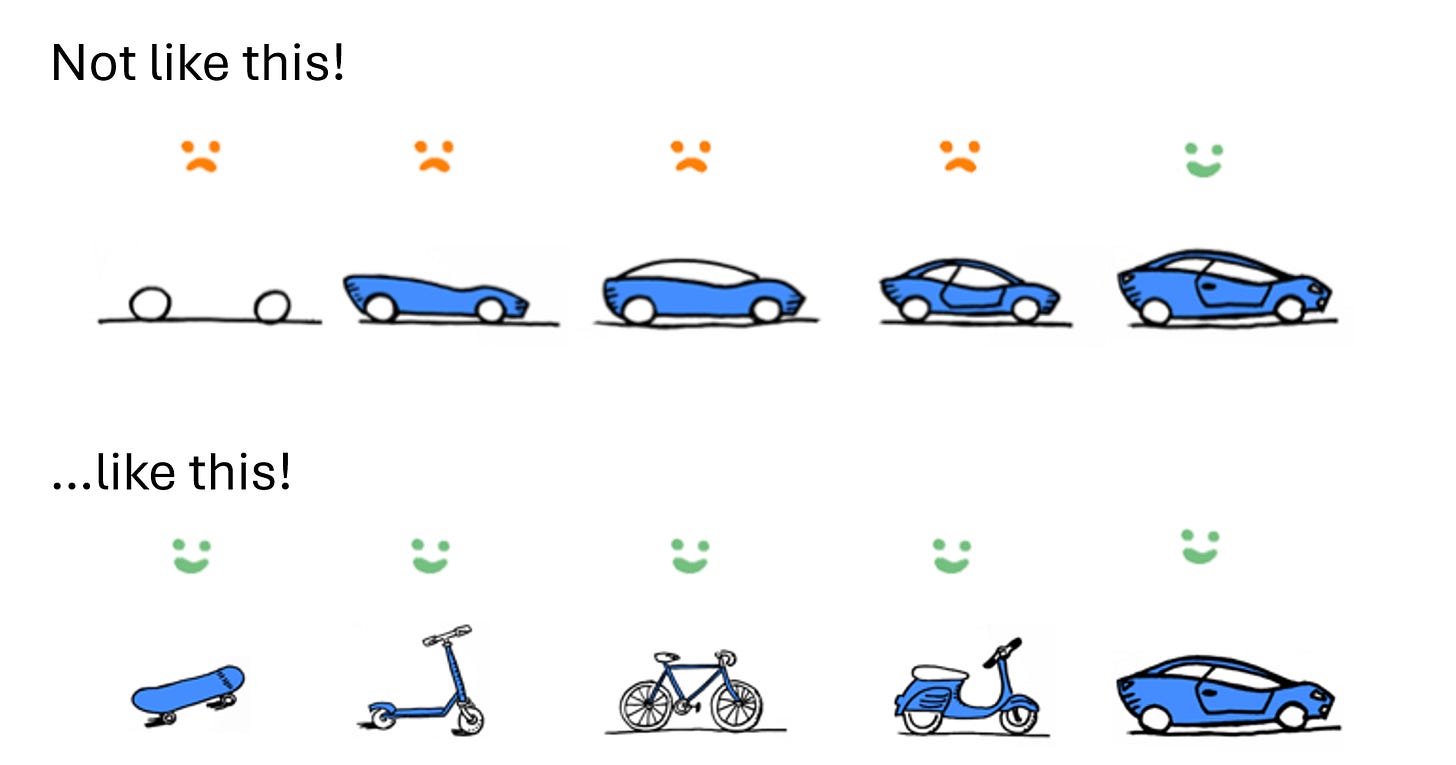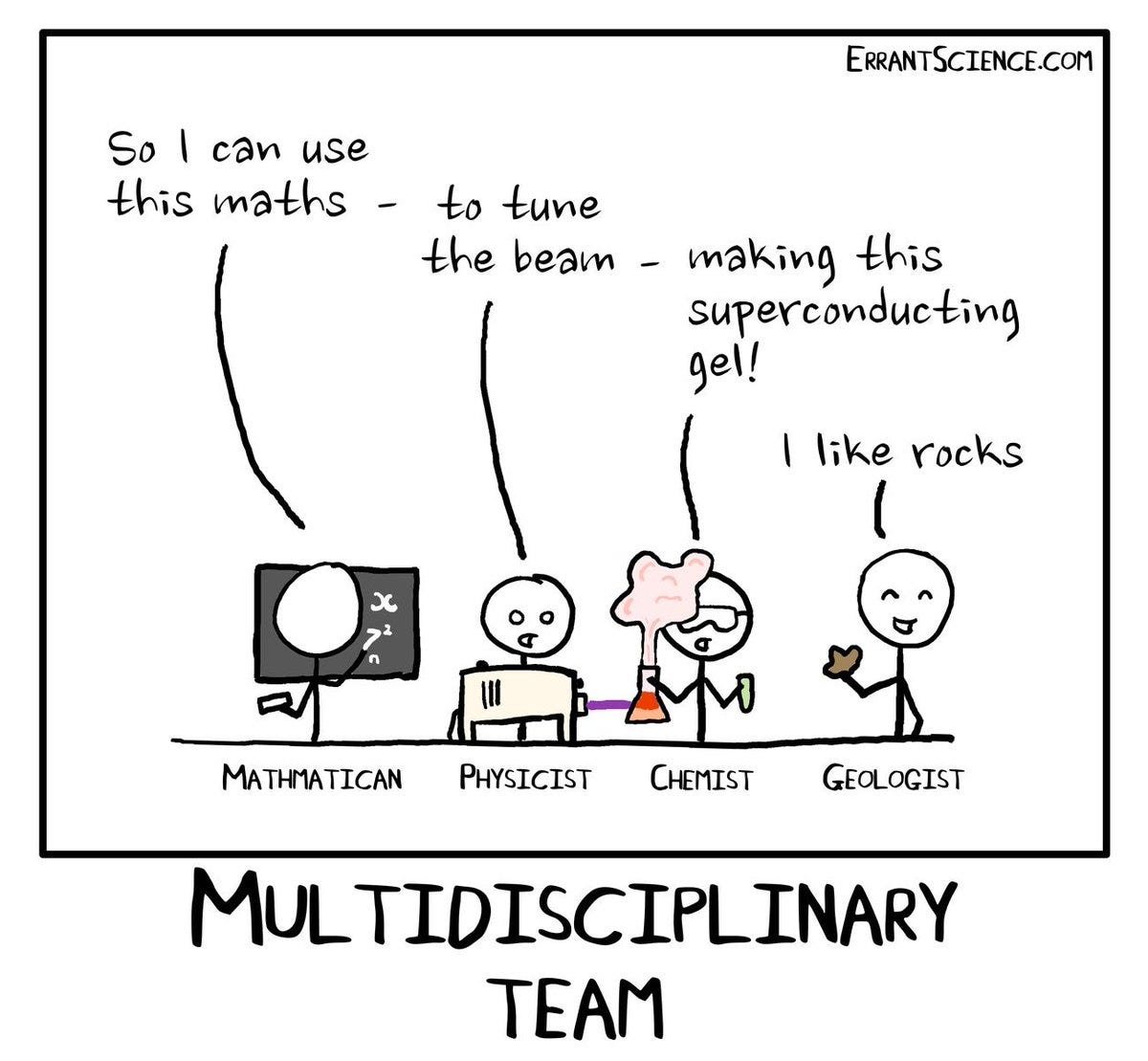Last post - I introduced Chaos Theory, and was since challenged by Jon - to “tell us what we can do, not why what we currently do has limitations :-)” Note his emoji-implied cheeky-monkey-ness! 🙊 But, behind the emoji… He has a legitimate point.
Personally however, I’m averse to telling you what we can do. I would always much prefer to show you a method 🎣 than tell you the answer 🐟.
“You must understand, young Hobbit, it takes a long time to say anything in [Old Entish]. And we never say anything unless it is worth taking a long time to say.”
- JRR Tolkien - The Two Towers
So with that in mind… over the next three posts I’ll round off our systems-thinking framework, by describing problem-solving methods using “iteration”, “goal setting” and “intervention”.
Up to now, I’ve been defining systems in terms of “knowledge”. I’ve described a “knowledge framework” (i.e. concepts and language) that are useful for thinking about and discussing systems :-
“Processes” - an - often highly complex and parallel - series of steps that take input, transform it in some way and produce output;
“Feedback” - explains how these outputs affect the wider environment and - in turn - how the environment affects the inputs of future process runs. And…
“Chaos” - explains how tiny variations in initial inputs can result in having the rug of long term predictability yanked right from under our feet.
Having knowledge of how these concepts interact is vital to systems level problem solving. But, whilst “knowledge” provides a foundation, “skills” (i.e. practical abilities) are equally important. To Jon’s point, It’s one thing to understand something, but it’s an entirely different thing to apply that understanding to actually improve something.
The High Skill / Low Knowledge Trap
I often ask some form of the question… “What specific problem are we trying to solve?”. This does on occasion result in the irritation of those eager to be taking immediate action. (“I have a set of skills and by God I’m going to use them!”) However, exciting though that may be, rushing to solutions without understanding the problem to be solved - applying skill without knowledge - ultimately results in wasted effort.
Take Captain America here…
In this case, Cap’s problem is not that he is unskilled. He is - in fact - much more skilled at some things - well chokeholds at least - than anyone I know. But, by failing to understand a fundamental (and very rapid) change in the nature of comic book baddies - he’s applying old skills to a new problem. “無駄”!
Upskilling as a solution
So, the obvious solution to this is to learn new skills… Skills that better fit the environment you’re working within. Captain America would likely have been much more successful in his takedown of Ultron if he’d have known how to unplug him.
When we think of skills, we tend to think of “specialisms”: Playing the piano; performing dental surgery; potting a plant or; making sushi. In the context of systems thinking, these skills primarily support “process execution” i.e. if you play a piano, you follow a set of instructions and produce music; or a sushi master will be able to expertly place fish that is warming up atop rice that is cooling down at the precise moment to serve at the ideal temperature.
Many people recognised as experts in their fields have not only developed a very high level of knowledge, but can also apply that knowledge through their high degree of skill.
These skills often have a long legacy of carefully refined institutional knowledge built up behind them. They require a large time investment to learn, and even more to master. There are obvious benefits to learning specialisms and it would be underselling it to say that much of the development of human civilisation to date has rested on the development of specialisms and the division of labour that results from that.
From a systems perspective… specialist skills mitigate against process risk.
i.e. A heart operation will run a lower risk of patient death if there’s a specialist qualified surgeon involved. Your chicken is less likely to be undercooked when prepared by a qualified chef and an experienced concert pianist is less likely to play a bum note. Long standing disciplines have worked this way for many generations.
This works well in a relatively stable and predictable environment where you know that time investment in developing a specialism can be put to good use over a long period of time. But, if you’re - say - a third or forth generation family butcher and suddenly everyone becomes vegan… what then? All that institutional knowledge and skill passed down - potentially over hundreds of years - suddenly loses it’s value.
Whilst increasing specialism may mitigate process risk we also need to consider that the potential for sudden change always exists in within chaotic systems.
Adapt or die
The global climate is a a good example of this. Arctic sea ice has declined by nearly 50% since the late 1970s. At that rate of warming, the Arctic could experience ice-free summers as early as the 2030s—a phenomenon unprecedented in recorded history. This will have a profound effect on the stability of the worlds ecosystems and sadly, there is now only so much preventative action we can take. We are beyond the point at which we can take corrective action.
Emma Howard Boyd, the former Chair of the UKs Environment Agency, made this point
“While mitigation might save the planet, it is adaptation - preparing for climate shocks - that will save millions of lives. Choosing one over the other on the basis of a simple either/or calculation is like telling a bird it only needs one wing to fly.”
What she’s saying here is that even with mitigations in place, some significant climate change impact is inevitable. There are now changes underway that are beyond our direct control and so “adaptation” – becoming resilient to the effects of environmental change – is equally important as mitigation.
How do we build resilience?
When many people think of resilience, they think of static, unyielding strength. However, resilience is not strength. It is - in reality - grounded in flexibility and adaptability. So, Captain America - with his singular set of skills - is not as resilient as as he looks at first sight.
Modern teaching and learning - particularly vocational learning - places an emphasis on balancing the learning of specialist skills with the learning of “transferable skills” i.e. skills broadly applicable to any situation - not just those applicable within a specific process context. Skills such as (but not exclusively…) :-
Communication: Being able to clearly and confidently articulate ideas;
Dependability: Being punctual, organised, and responsible;
Time management: Being able to plan and organise;
And many many more: LMGTFY
In the past, many of these have been seen as “soft-skills” - something that individuals might have a natural talent for. Nowadays, it is still not widely, but increasingly widely recognised that these skills are both…
An important success factor in many situations (precisely as they result in adaptability and resilience), and perhaps more importantly…
Can be both taught and learned.
Learning a range of both specialist and transferable skills that can be pointed at a number of different situations gives you adaptability which is a massive advantage in a rapidly changing environment.
The combination of both knowledge and applicable skills can be though of as “capability”. In short, the “the ability to get sh!t done”. But how do we increase our capability to the point where we feel comfortable that whatever challenges a volatile environment might throw our way, we can successfully navigate them.
Incremental capability building
Traditionally, capability development looks like this.
You learn a topic - normally at school - then if you show an aptitude or interest - you go to college or university and study it some more. If you’re really interested - you might do your own reading on the matter. Then when you’re fully clued-up you become qualified and you’re let loose on the world to apply your skills which you then refine with experience.
However, this model has a major drawback. Knowledge that is not applied (through regular practice of skills) erodes.
Over 20 years ago - I studied GCSE French and received a Grade B for it. Whilst I can still “Comment t’appelles tu?” you, nowadays I wouldn’t get much further than that. Maybe an “Ou est la banque?”
The reason for this is that I just don’t practice - not by deliberate intent - but through lack of a regular need and opportunity to apply that knowledge. I have only ever been been to France 3 times in my entire life and any French speakers I know have always spoken English by default… and so… my French goes rusty.
So, what’s a boy to do?
Iterate.
The answer lies in “Iterative progression”. Rather than build up a large body of knowledge - in the hope that it might one day be useful - “Continuous” (or “Iterative”) methods embed adaptive mindsets and behaviours within “actors” (those performing actions) within a system.
The concept of iteration directly aligns with the system component of feedback, and uses it to ensure that capability adapts to the environment.
In the context of continuous learning, this means applying the negative feedback loop to regulate the acquisition of skills - revisiting topics, closing knowledge gaps and building on these skills over time.
In academic circles this iterative learning underpins what is referred to as a “spiral curriculum” where knowledge is gained thorough reading, lectures and seminars and applicable skills are practiced through simulations and work experiences such as placements.
You often see vocational courses such as nursing and paramedicine structured this way. Where a course might cover Biology as an academic topic, but additionally run clinical simulations where students get to practice applying that knowledge to real-life scenarios, regularly returning to topics to build upon.
In the domains of service innovation and technology development, the concept of an “MVP” (“Minimum Viable Product”) is a corresponding implementation of this continuous and iterative learning model.
Progressive enhancement, whether product development, building skills, health betterment, business development or any other form of continuous improvement, is all about making sure that a capability is able to be applied to a “problem space” at every step of the process, instead of only at the very end.
This builds both knowledge and skill in tandem and so… (brace yourself… )
…is intentionally designed to continuously add value.
OK - So the point of this article is that fostering resilience and adopting an adaptive approach - iteratively building knowledge and skills in a way that responds to changes in the environment through feedback - lets us both learn the specialisms needed to do a job well (i.e. execute a process) and be resilient in the face of potential rapid change driven by a chaotic environment.
But whilst this approach can add value how can we ensure that it actually does.
Decisions, Decisions.
Well, we’ve developed a high level framework to understand the component parts of a system and an approach to better grapple with them. (No!… Not literally Captain!) This framework describes the “why” and the “how” of systems thinking, but how do we identify the “what”?
This circles back to the question I posed at the beginning of this series… “How do you add value?” Answering this is wrapped up in the concept of “Strategic Choice”. In plain English… choosing what to do in the long run?
“I wish it need not have happened in my time.” said Frodo.
“So do I,” said Gandalf, “and so do all who live to see such times. But that is not for them to decide. All we have to decide is what to do with the time that is given to us.”- JRR Tolkien - The Fellowship of the Ring
Making clear choices - acting with decisiveness - grants us autonomy, which leads to an increased sense of “agency” - a confidence in the ability to influence - whether at an individual, organisational or societal level.
In the final two articles, (iterations 6 and 7) of this initial series on systems thinking, I’m going to discuss those choices - which are seldom simple - through two viewpoints :-
“Goal setting” (deciding what to do) and;
“System Intervention” (deciding how best to do it).
I’ll look forward to seeing you there!
Footnote: One of my colleagues/mentors once gave me a piece of advice that has stuck with me ever since. “If you can’t articulate the reasoning behind your decision, you’re not qualified to make it”. Everyone in a Multi-disciplinary team is important, but some are more informed than others.




